Induction cooktops: how fine is the control? (lots of levels?)
Hi Houzzers,
We're facing the gas-versus-induction question in building a new kitchen, which I know many of y'all have faced before. It seems there's a whole lot to like about induction -- low lows, high highs, fast boils, less heat, no combustion byproducts, etc. But specifically, I'm wondering about the level of practical temperature control you have with induction. Many people do indeed praise these cooktops for their supposedly fine control. But as someone with minimal experience cooking on induction, I have trouble understanding how that can be true based on what I read. I'm hoping someone here can educate me!
On basically all the induction cooktops I read about, the control over the burner's energy output is discrete (e.g. 1-10 in whole or half-number increments), rather than continuous (any arbitrary level between the min and the max output, based on where you turn the dial). Some have 9 or 10 settings, and even the very expensive cooktops (Gaggenau) don't seem to have that many levels, e.g. 17.
I understand that there's no universally valid mapping between pan temperature and the energy output of an induction burner, that it depends on cookware, etc -- but just for the sake of argument, suppose that on a given pan, the min output of the burner corresponds to about 100 degrees and the max to about 500. Even 17 levels gives you intermediate steps that are approximately 25 degrees apart. That doesn't seem like very fine control to me. For many sauces, especially thicker ones, I imagine that 25 degrees might be the difference between "unable to maintain a simmer" and "boiling away and scorching the bottom." For example, I have a cheap portable unit that is great for boiling a pot of water on the high end, or melting butter on the low end. But there's no setting that will cook rice adequately -- one setting is too low, takes forever, and gives me gummy rice; while the next level up means I get semi-burnt rice stuck on the bottom of the pot. I know that's a cheapo unit, but I find myself wondering whether any induction burner with widely spaced discrete settings will -- to one extent or another, for one application or another -- suffer from a version of the same problem.
I'm much more used to cooking over gas, and I really like the effectively continuous control over the burner's energy output. On the low end, depending on the thickness of a sauce or liquid, you can find exactly the right setting for a simmer. And on the high end, with enough practice on your burner, you can find the right level for a high-temperature stir fry that will not exceed the smoke point of your oil.
So I guess my questions are:
1) Am I simply wrong? For those that use induction, does it feel in practice like you have a level of control that is reasonably similar to a gas burner? Maybe e.g. the increments aren't linearly spaced, but chosen intelligently to cover common cooking situations, denser at the bottom end, etc. (If so, which cooktop do you have?) Or instead do you encounter dishes or situations where one setting is too low, the next too high, and you're gritting your teeth for lack of an intermediate setting?
2) I know there are some very expensive portable units that have extremely fine control over energy output (Breville Control Freak has 1 degree increments, some Vollraths have 100 levels between min and max, etc). These are so finely spaced that they become effectively continuous, like gas. But those are portable units and they're very, very dear -- what about in a built-in cooktop? Are you aware of models that have especially fine control over energy output?
Thank you very much for taking the time to read, ponder, and share your knowledge and experience. Like I said, I don't cook with induction, so I'm eager to be told I'm wrong by those that do!
Comments (26)
suseyb
5 years agoI don't have any experience with induction cooktops, but do have experience with induction ranges. I have had two induction ranges. My first was an Electrolux, and it had whole steps, half steps, and quarter steps. The quarter steps at the lower end of the scale. I loved it. It was just like cooking on gas.
My second induction range is a GE Profile. It has 10? steps. All are whole steps, as far as I can tell. I long for a step or three in between 4 and 5. LOL It's not like cooking with gas, and honestly, there are times when I would rather go back to the coil range that this replaced.
Make sure that the induction cooktop that you are looking at has half and quarter steps for fine tuning at the lower levels. This will give you excellent control.
J S thanked suseybRelated Professionals
Albany Kitchen & Bathroom Designers · Grain Valley Kitchen & Bathroom Remodelers · 93927 Kitchen & Bathroom Remodelers · Boca Raton Kitchen & Bathroom Remodelers · Broadlands Kitchen & Bathroom Remodelers · Crestline Kitchen & Bathroom Remodelers · Idaho Falls Kitchen & Bathroom Remodelers · Kuna Kitchen & Bathroom Remodelers · Joppatowne Kitchen & Bathroom Remodelers · Terryville Kitchen & Bathroom Designers · Waukegan Kitchen & Bathroom Remodelers · Red Bank Cabinets & Cabinetry · Rowland Heights Cabinets & Cabinetry · Liberty Township Cabinets & Cabinetry · Santa Paula Tile and Stone Contractorskaseki
5 years agolast modified: 5 years agoAs I recall my Frigidaire has the same steps as my previous Kenmore Electrolux clone -- 17. I think this includes "low," which can be imposed on setting "1" and power boost. Steps 9 - 7 are full steps; 6.5 to 1 are in half steps. For the Frigidaire the steps may be roughly linear in power, but I don't recall seeing exact data. I know that Wolf's 10 integer steps are non-linear, with more control at the lower power end.
My built-in Cooktek wok hob has 20 steps, probably fairly linear between 5% and 100% of 3500W. I've never noticed a need for a higher sensitivity power setting, but I usually dial the power up and down as needed (similar to lifting the wok over gas).
In any case, temperature is not what is controlled, but heating power. What that yields in temperature depends on duration, the material being cooked, and pan conduction, convection, and radiation losses.
As an extreme example, a particular small pan of mine containing about 2/3 its volume of cold water on the smallest (6-inch) Frigidaire hob can attain a boil in 2 minutes on boost (2000W). It can retain a boil at a setting of 4.5 or 5 with two cold eggs, depending on what type of boil one wants. A setting of 5.5 is about the highest one would want to use if avoiding breaking egg shells is desired. For this hob, setting 9 is 1450W. In any case temperature is not being controlled; higher settings boil more vigorously but the the water is still at 212F/100C.
J S thanked kasekijwvideo
5 years agolast modified: 5 years ago>>>" I imagine that 25 degrees might be the difference between "unable to maintain a simmer" and "boiling away and scorching the bottom." For example, I have a cheap portable unit that is great for boiling a pot of water on the high end, or melting butter on the low end. But there's no setting that will cook rice adequately . . . "<<<
That is entirely characteristic of cheap portable units. It is because the makers hold down costs with electronics that give more or less linear power settings. That varies with ranges and full-size cooktops. Some of them have electronics that scale the power logarithmically with finer gradations at the lower end of the scale where finer adjustments matter most. Some find those gradations okay for their cooking, others do not. There is a degree of personal preference in this. Some folks need/want extremely fine gradations as in sous vide cooking where they want/need 0.5°F gradations in the temperature of the cooking liquid. For that degree of precision, you would need induction hobs with continuously variable power controls such as those found on the current GE Cafe induction ranges. From experience, I can say that degree of precision requires a great deal of almost OCD fiddling whether one is cooking on induction, radiant electric or gas. IME, it can be difficult to achieve that degree of precision on most gas stoves.
Now, if you can accept a lesser degree of precision --- as with, say, spring valve pressure cookers --- even some of the 12-power step induction burners can work with appropriately spaced power settings. I'm recalling, in particular, that several posters here reported being able to run notoriously finicky Kuhn Rikon pressure cookers on the Miele induction range which has only 12 steps. (The name "liveinseattle" is one name that I recall for that in the long thread on the Miele range.)
There is another aspect, as well, and it particularly impacts fine heat adjustments on cheap portable units (a/k/a "portable induction cookers" or "PIC"). It also affects some ranges and full size cooktops, too. That aspect is how fine the pulse width modulation ("PWM") is. PWM is the frequency with which the power is cycled on and off to produce lower heat settings. Induction hobs simulate lower power/lower heat by cycling the power on and off. With a high frequency of switching, the power goes on and off many times a second. The higher the frequency, the more stable the heat setting. With high frequency PWM, your simmering liquid is very still. OTOH, inexpensive PICs generally have very crude PWM. On them, the low setting will give you a couple of seconds of no power and a couple of seconds of full-on OMG hot boil, followed by totally off stillness for a couple of seconds, them back to OMG hot, etc. IME, that crude PWM has been the biggest problem I have had with cooking rice on cheap PICs.
Now, it has been a while since I used one of the Frigidaire cooktops that Kaseki mentioned, but, IIRC, there was pretty good PWM on that one and I had no trouble cooking rice on it.
J S thanked jwvideojwvideo
5 years agolast modified: 5 years ago>>>" 2) I know there are some very expensive portable units that have extremely fine control over energy output (Breville Control Freak has 1 degree increments, some Vollraths have 100 levels between min and max, etc). These are so finely spaced that they become effectively continuous, like gas. But those are portable units and they're very, very dear -- what about in a built-in cooktop? Are you aware of models that have especially fine control over energy output? "<<<
If we're talking expensive PICs with fine control, let's not forget the Cooktek Apogee line (which also has 100 settings) and the Garland-Manitowiac's infinitely variable commercial PICs. FWIW, those are priced at three to four times the price of the Vollrath PIC but somewhat less than the Control Freak. If we're talking about the Breville/Polyscience Control Freak, we also have to talk about the Tasty OneTop and the Hestan Cue, too, don't we? :>) FWIW, my recollection is that the TastyOnetop only cost/costs something like $150 and was/is the subject of a very long thread on egullet.
Meanwhile, back at your point, I have to say that I cannot recall any regular induction cooktops that have settings like those. What I do recall is that the GE Cafe line of induction cooktops and the GE Cafe induction ranges come with (or came with) a wireless temperature probe that went in a pot on one burner and gave +/- 1°F control over the temperature in the pan on that burner. I think that this might be a link to the probe information. As best I can recall, those were produced by a GE spinoff product called something like "Paragon." The technology relies on an in-pot thermometer with bluetooth or wi-fi connections to communictae with burner electronics to control the heat level to within a degree or so. The tradeoff on the potential for that very fine control is that you have to use an app on your smart phone to get a digital read-out that tells you exactly where to set the burner's power knob to replicate the setting the next time you want it.
J S thanked jwvideokaseki
5 years agojw: On the Frigidaire on the smallest hob, "PWM" (duty cycle of the high frequency coil power) is visible in water boiling at the lower settings using a thin steel pan (old Revereware pan made from 400 series). My impression from memory would put it at a cycle per second at setting 4.5 on the small hob. It might be difficult to notice with a clad pan having a heat spreader layer or a cast iron pan. Either would have a thermal time constant that would tend to smooth out the effect of the power switching.
For rice I use an induction Zojirushi, but my wife sometimes makes rice in a pan on the cooktop. I don't recall which hob and what pan, but I also don't recall any complaint from her about not being able to select a suitable power setting.
"Some folks need/want extremely fine gradations as in sous vide cooking where they want/need 0.5°F gradations in the temperature of the cooking liquid."
Frankly, I don't know how one could do this with sufficient [servo] control stability unless a temperature sensor in the liquid was part of the control loop and the control loop designer had total control of the thermal and electrical time constants, i.e., the pan used was part of the system and not a user option.
J S thanked kasekiJ S
Original Author5 years agoThank you to everyone for their very detailed comments and advice. Both your technical knowledge and practical experience are very informative! Something like logarithmic rather than linear spacing of steps sounds key to having good control. FWIW, I don't feel like I need the extreme control of 1 degree increments, wireless probe feedback, etc -- just something approaching the continuous feel you have with gas. The kind of control that backyard feast describes sounds more than sufficient. I will look into the Bosch cooktops you mention!
jwvideo
5 years ago>>>"Frankly, I don't know how one could do this with sufficient [servo] control stability unless a temperature sensor in the liquid was part of the control loop...<<<
Neither did I until I saw it done. Wait, I suppose you could say that the "control loop" was the mind of the obsessively ultra-gourmet wacko cooking jedi who mistook my stunned silence for admiration. :>) Mere mortals have to make do with the likes of the Paragon, the Control Freak, the Heston Cue and the Tasty OneTop. For a view of "that dark side" --- or maybe it is just the proverbial deep end --- you could check out this thread at e-gullet.
J S thanked jwvideokaveratir
5 years agoWe went induction 9 years ago, and I got a GE profile range. That range had .5 increments, so, I guess about 19 potential settings. I grew up cooking on a gas range, and LOVED the induction -- it's like gas, but so much easier to clean and keep clean. Just did a new reno in a new residence, and was disappointed to find out that the GE went to full increments of settings. So, I did a full spread sheet of the available free-standing and slide-in induction ranges available, to try and find which ones had the .5 increments (first must-have), a warming drawer (second must have) and a bridge ( a nice, but not must have).
We settled on the Electrolux slide-in, which has the .5 increments in the mid-level settings, and .2 at the lower. I am findingthat the temp settings are pretty much equivalent to those we had on the Profile (scrambled eggs at 6.5, carmelizing onions at 3 to 3.5).
J S thanked kaveratirdchall_san_antonio
5 years agoSeventeen heat levels? Seventeen. How many do you have on a gas range? Four? Sure you can dial in between the four stops, but can you repeat the exact heat level every time like you can with induction?
Here's how you cook with gas: Turn the flame up high to heat the pan and then dial it back down to cook the food. But you probably turned it down too low the first time, so you have to crank it up just a bit. Bend over and look at the flame kissing the bottom of the pan and then guesstimate how much more gas you need to get just the right cook temp. While all this is going on the garlic burned and it's now bitter.
Here's how you cook with induction: Turn the knob to the final cooking temp and it rapidly heats up to that value and holds for as long as you want. No hotter, no cooler. But if you find you need just a few more degrees, tap the button. Then make a note of the new cooking temperature, because you can dial that in perfectly the next time you cook. For example I make grilled cheese at the 260 setting on my Nuwave hotplate. Not 250, that's too cool. Not 270, that burns the bread before the cheese melts. Interestingly I cook bacon at the same setting.
J S thanked dchall_san_antoniosuseyb
5 years agoWe settled on the Electrolux slide-in, which has the .5 increments in the mid-level settings, and .2 at the lower. I am findingthat the temp settings are pretty much equivalent to those we had on the Profile (scrambled eggs at 6.5, carmelizing onions at 3 to 3.5).
I loved my Electrolux, but had so very much trouble with it that I couldn't bring myself to buy another Elux product. I had one of the first Elux slide in ranges with a double oven. I'm sure they have fixed it by now, but we paid for that darn thing twice with all the repairs, and I couldn't bring myself to doing it. I really hoped that the GE Profile I purchased would be sort of similar, but it is oh so not. I was very spoiled by the Electrolux. I hope you enjoy yours!J S thanked suseybJoe T.
5 years ago"Here's how you cook with gas: ... While all this is going on the garlic burned and it's now bitter."
Not im my house. ;)
J S thanked Joe T.J S
Original Author5 years ago"Seventeen heat levels? Seventeen. How many do you have on a gas range? Four?"
Considerably more than four. As an experiment, I counted how many output levels I was capable of achieving on the simmer burner of my 20-year-old gas cooktop. I started at the lowest setting, and nudged up the dial in the smallest increments that my dexterity would allow. I counted 14 little nudges between "low" and "medium-low," and then I stopped counting. Extrapolating to the full range of the dial (between ML and M, M and MH, MH and H), that's roughly 4x14 = 56 achievable intermediate steps. Do I use all these intermediate steps all the time? Of course not. But I rely on them being there when dialing in a simmer -- e.g. on a dish or sauce that I haven't cooked a hundred times before.
"Sure you can dial in between the four stops, but can you repeat the exact heat level every time like you can with induction?"
A fair point. None of these settings as as easily reproducible as the simplicity of an integer or fractional integer setting read off digital indicator.
Having said that, in terms of what really matters -- how food is behaving in the pan -- I would expect nontrivial interactions between (burner output level) X (food being cooked) X (cookware) X (ambient temperature and humidity). If you cook the same dish in the same amounts in the same pan in the same ambient conditions over and over again -- yes, I can see how a 3.5 is always a 3.5. I can see why a restaurant chef would love induction! And I cook like that some of the time, but not all of the time, and I'm wondering whether that makes a "set it and forget" approach potentially more problematic, especially for an unfamiliar dish. I like to dial things in by eye based on how the food is behaving in the pan, for which I find fine gradations of output are indispensable.kaseki
5 years agoA 3.5 is always a 3.5 if the voltage in the residence is constant. Marginal household wiring, a marginal neighborhood transformer, marginal overall utility voltage regulation can cause some variation because the induction cooktop designers are not going to expend a lot of cost, space, and additional cooling on highly regulating the coil power circuit. This is detectable with my Frigidaire Gallery by slight changes in boiling intensity at my usual power setting between weekday mornings and Sunday mornings. Sometime I'll have to actually measure this.
J S thanked kasekiBigDaddy
4 years agoI'm glad to have found this thread. I'm trying to figure out a potential new kitchen, and unless I'm misunderstanding don't seem to find that an induction range/cooktop exists like I think it should in the world. Could someone help set me straight? It seems like an ideal induction top should encompass the following:
1) CONTROL of temperature TO A SETPOINT, in degrees Fahrent/Celsius, using feedback control (ideally, if you're cooking in a liquid you should be able to drop in a thermocouple. Not sure how that works exactly in a pan not filled with liquid, but maybe there's a proxy, or fallback).
There are really two aspects to this: a) being able to select a temperature [NOT a power level on a 10 or even 100 point scale] and b) being able to precisely maintain it within a tight window
I see that the Breville/Polyscience Control Freak, which is a portable unit running on 110V, does precisely this--just dial in 131 degrees F, for example, and you can have sous vide.
2) Also, POWER, and this only available with voltage, i.e. 240/220/208V and not 110V.
This will allow fast heat-ups, high max temps and also help maintain tight temperature control above, in case of a temp drop.
The Control Freak is 110V only and 1800W, I think. It just doesn't have the power, captain, of a built-in induction rangetop.
The best use case I can think of for 1 & 2 combined is deep frying something like fried chicken. I want to quickly head up a big dutch oven of peanut oil to 350 degrees F and stay as close as I can to that temp when I drop in some cold(er) chicken, so it stays crispy and light.
Is this too much to ask??? Does it not exist (aside from what sounds like a GE wireless probe that didn't work well)? I'm not particularly price sensitive here.
Alternatively, please tell me if you disagree that both of these conditions are important.
P.S. as a bonus - 3) I'd like it to have bridgeable burners/or a flexible zone, so I could put a really large griddle on it, and have even and sometimes high heat (for searing, not pancakes) across the entire surface.
Would love your thoughts. Thanks in advance!kaseki
4 years agolast modified: 4 years agoW.r.t. subject 1: I personally am not aware of any cooktop sized (30 - 36 inch) units with temperature control via an external probe. It is certainly within the realm of electronics design to build such a unit, although I can imagine considerable algorithmic complexity to handle all sizes and magnetic susceptibilities of potential pans/contents, as well as dealing with what happens in boil-overs, probe falling out of pan, etc., and this tuned for each hob so facilitated. At least the poles of the induction circuit should be well away from those of the cooked mass thermal time constant -- making control stability easier to manage in normal operation. Perhaps a tour through the web site theinductionsite.com would provide more insight about what is available.
An immersion thermometer and cook control of power setting might do for the intended cooking project.
The OP should keep in mind that even high-end appliances have to meet a reasonable price point so expensive bells and whistles tend to be avoided until someone finds a "fool-proof" inexpensive means of adding them.
W.r.t. subject 2: All residential built-in cooktop induction units of which I am aware work on 240 Vac and (with some loss in available power) a 208 Vac leg of three-phase power. Cooktek products might be investigated to see if there are any operating at other voltages (not likely to be available in residential domiciles).
W.r.t. subject 3: These exist. Visit link above to see who has what.
weedmeister
4 years agoI think Bosch had/has something like this, but it uses a special pan with a pop-up infrared sensor. My CookTek has it, but it isnt that accurate.
I have yet to see a gas hob that has this.
J S
Original Author4 years agoBigDaddy, have you looked into the Hestan built-in cooktops? You need to buy their cookware, and the only dealers seem to be in CA, but they’re the closest to what you describe.
FWIW, I dont think you would find difficulty heating oil quickly even on an 1800w portable cooker like the Xontrol Freak. Kitchen oils have roughly half the specific heat of water and would go reasonably fast compared to water boiling. I use mine for that purpose, and I have never once thought that it went slowly.J S
Original Author4 years agoAnd BigDaddy, as a follow up, if you don't like the Hestan, one practical suggestion for you might be the following (taking you at face value that you're not price sensitive):
1) One of those 18" or 24" built in induction cooktops, made e.g. by Wolf, Miele, and probably some others, with 2 or 3 burners, running on a 50A circuit at 220V.
2) two ControlFreaks flanking your cooktop that live on the counter, each plugged in to a dedicated 20A circuit that you've paid an electrician to wire in. (Yes, they will run on ordinary 15A circuits, but at max power they will draw a full 1800W, and if the voltage spikes even a tiny bit above 120V, you will trip the circuit.)
Then you'd have power when you need it and control when you need it. (I can just about assure you that you will find cooking on a ControlFreak to be worth the price of admission.)Jin Zhang
2 years agoJS, thank you asking the question, exactly what I had been wondering. I too do rice, stir fry and lots of simmering among other Chinese food. I love the continuous control and immediate feedback of a gas stove. I used 2 induction cooktops (portable ones) while travelling, the one that has 5 degree (Fahrenheit) increment feels adequate in terms of control compared to gas, but I have no experience with built in induction, which I'm now considering as part of a kitchen remodel and I'm looking for information. I see this an old post. Hope you've found the perfect solution.
julieste
2 years agoDoes anyone have info on which current induction ranges have more gradations? Upthread the Café and Bosch were mentioned as was Electrolux (good range of settings but problematic repair wise).
opaone
2 years agoNone of the consumer induction ranges and cooktops we looked at provided much in the way of accuracy and control. The best for both is the Control Freak counterop. Distant second is probably a Max Burton and I know a couple of Avantco's are pretty good.
It really depends on how picky you are and what types of food you create. Some people are quite happy with consumer inducation cooktops, some not.
More: https://bamasotan.us/the-kitchen/
J S
Original Author2 years agoBreville ControlFreak for the win. Expensive but there's nothing else like it. Too bad it doesn't come in built-in form at 220V.
jwvideo
2 years agolast modified: 2 years agoJulieste:
Assuming you meant to limit your question to ranges and not cooktops and portable induction cookers, here is what I recently found when researching a similar question for a friend. Both of the current Bosch models still offer (IIRC) 19 levels. The GE Cafe and Viking induction ranges still have more or less infinitely variable power settings. Miele has 12 settings the burners on its induction range. All other current ranges that I found had fewer settings.
BTW, the trade-off for the Viking's and Cafe's variable settings is that you do not get a digital read-out for the settings. You pretty much do the same kind of observing and fiddling you would do with a gas burner range and coil burner electric ranges with similarly variable level controls.
For its Cafe induction ranges (and Cafe induction cooktops and some of the GE Monogram induction cooktops), GE does offer a Bluetooth-dongle "precision cooking probe." You can see it here: https://www.geappliances.com/appliance/Precision-Cooking-Probe-with-Bluetooth-Dongle-and-Instruction-Manual-JXSOUSV1
However, that GE probe seems aimed at sous-viding rather than more general use. Last time I checked, the probe had a limited (and low) temperature range and reportedly only worked with a range's (or cooktop's) very largest burner.
There are more choices with portable induction cooktops, particularly if interested in the spendier commercial models, but I've assumed you weren't asking about them.
jwvideo
2 years agoJS -- the Control Freak now seems to have some competition. Vollrath is now offering a 240v commercial portable induction cooker, model HPI4-2600, with 100 power settings, 1°F temperature settings, and an in-pot probe. Dunno much about it except that the Vollrath is priced at 1/3 less than the Breviile.


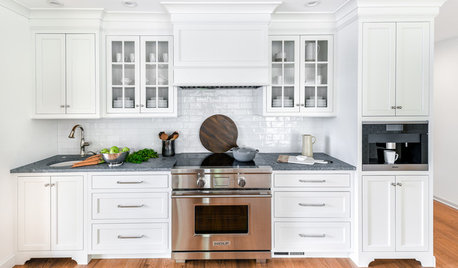

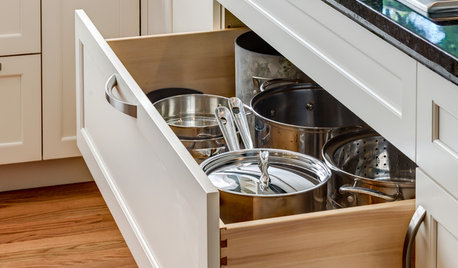

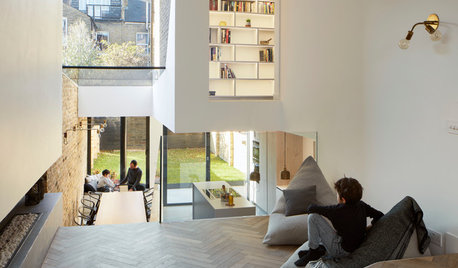
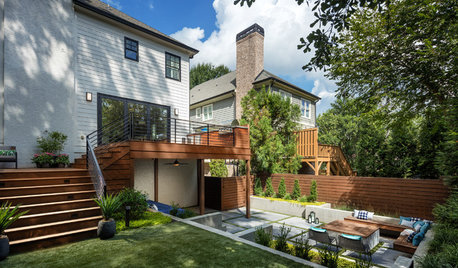

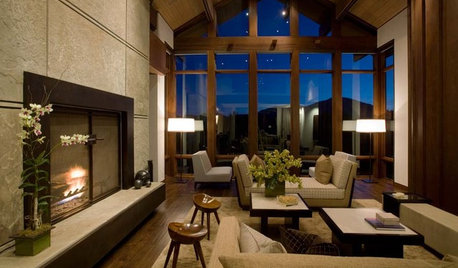






backyardfeast